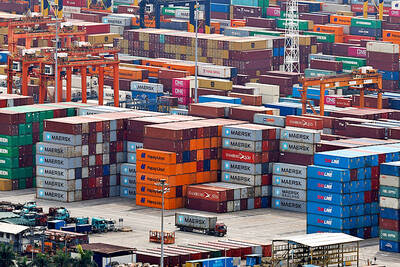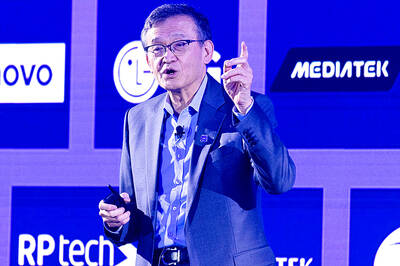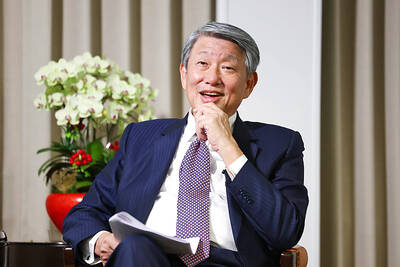Bruno Paumard, the cellar master at a vineyard in China, cannot stop laughing while describing a bottle of supposedly French wine a friend gave him two years ago.
It was white wine, with a label proclaiming it is from the vineyards of Romanee-Conti, the bottle bearing the logo that is on bottles of Chateau Lafite-Rothschild, and declares its origin as Montpellier in southern France.
Domaine de la Romanee-Conti, better known for highly prized and highly priced vintages from France’s Burgundy region, makes only a tiny amount of white wine, labelled Montrachet. It has nothing to do with the equally prestigious Lafite, which is from the Bordeaux region, and neither brand is produced anywhere near Montpellier.
“It’s the most magnificent example of a hijacked brand of wine I’ve ever seen,” says Paumard, who works with Chateau Hansen in China’s Inner Mongolia. “It doesn’t get better than that.”
Liquor stores, restaurants and supermarkets in China, the world’s most populous nation and fifth-largest wine consumer, wage a constant battle against fake wines. The amount of knock-offs on the market may increase as Beijing investigates wine imports from the EU, threatening anti-dumping tariffs or import curbs.
It announced the investigation after the EU slapped anti-dumping duties on Chinese solar panels.
EU wine exports to China reached 257.3 million liters last year for a value of nearly US$1 billion, more than a ten-fold increase since 2006 as rapidly increasing wealth transformed lives and tastes in the world’s fastest-growing major economy. More than half of last year’s total — 139.5 million litres — came from France.
Nobody knows how much of the market is cornered by fakes and copycats, says Jim Boyce, who follows China’s wine industry on his blog, grapewallofchina.com.
“Things that are faked tend to be things that are very popular,” Boyce said.
And wine, especially expensive wine, is popular in China, sometimes more for bragging rights than taste.
“Those expensive wines are where you see more fakes,” said Maggie Wang, who was sharing a bottle of Italian white wine at a restaurant with a friend in Beijing.
“But there’s lots of phony wine. Everything’s fake in China,” she said. “For a lot of Chinese consumers, the more expensive it is, the more they’ll buy it. Chinese like things like that — they’ll buy the most expensive house, drive the most expensive car. They don’t want the best, they want the most expensive.”
The iconic Chateau Lafite has become the poster child for wine forgery. A bottle of Lafite from 1982, considered one of the greatest vintages of the 20th century, can cost more than US$10,000.
That has led to a thriving industry in Lafite knockoffs in China. Aficionados say there are more cases of 1982 Lafite in China than were actually produced by the chateau that year.
Christophe Salin, president of Domaines Barons de Rothschild, which owns Lafite-Rothschild, says fake Lafite is not the problem.
“I have never seen a bottle of fake ‘82 Lafite,” says Salin, who has been traveling to China for 20 years.
“The problem we have is the creative attitude of some Chinese. They sometimes use our name in funny ways,” he said.
Several wines on the market are branded with names close to Chateau Lafite, including “Chatelet Lafite.”
Lafite “is such a generic brand in China that it has widespread appeal as a name and as a status symbol,” Boyce says.
The mystique extends beyond the wine — in Beijing there is a “La Fite British Exotic Bar” and the “Beijing Lafitte Chateau Hotel.”
The first step for anyone counterfeiting wine is to find or manufacture a bottle that is close to the original.
“People will also use real bottles with something else inside, or make labels that are spelled differently,” says Cheng Qianrui, wine editor for the Chinese lifestyle Web site Daily Vitamin. “If you know wines, you can tell, but not a lot of Chinese do.”

Nvidia Corp CEO Jensen Huang (黃仁勳) today announced that his company has selected "Beitou Shilin" in Taipei for its new Taiwan office, called Nvidia Constellation, putting an end to months of speculation. Industry sources have said that the tech giant has been eyeing the Beitou Shilin Science Park as the site of its new overseas headquarters, and speculated that the new headquarters would be built on two plots of land designated as "T17" and "T18," which span 3.89 hectares in the park. "I think it's time for us to reveal one of the largest products we've ever built," Huang said near the

China yesterday announced anti-dumping duties as high as 74.9 percent on imports of polyoxymethylene (POM) copolymers, a type of engineering plastic, from Taiwan, the US, the EU and Japan. The Chinese Ministry of Commerce’s findings conclude a probe launched in May last year, shortly after the US sharply increased tariffs on Chinese electric vehicles, computer chips and other imports. POM copolymers can partially replace metals such as copper and zinc, and have various applications, including in auto parts, electronics and medical equipment, the Chinese ministry has said. In January, it said initial investigations had determined that dumping was taking place, and implemented preliminary

Intel Corp yesterday reinforced its determination to strengthen its partnerships with Taiwan’s ecosystem partners including original-electronic-manufacturing (OEM) companies such as Hon Hai Precision Industry Co (鴻海精密) and chipmaker United Microelectronics Corp (UMC, 聯電). “Tonight marks a new beginning. We renew our new partnership with Taiwan ecosystem,” Intel new chief executive officer Tan Lip-bu (陳立武) said at a dinner with representatives from the company’s local partners, celebrating the 40th anniversary of the US chip giant’s presence in Taiwan. Tan took the reins at Intel six weeks ago aiming to reform the chipmaker and revive its past glory. This is the first time Tan

CUSTOMERS’ BURDEN: TSMC already has operations in the US and is a foundry, so any tariff increase would mostly affect US customers, not the company, the minister said Taiwanese manufacturers are “not afraid” of US tariffs, but are concerned about being affected more heavily than regional economic competitors Japan and South Korea, Minister of Economic Affairs J.W. Kuo (郭智輝) said. “Taiwan has many advantages that other countries do not have, the most notable of which is its semiconductor ecosystem,” Kuo said. The US “must rely on Taiwan” to boost its microchip manufacturing capacities, Kuo said in an interview ahead of his one-year anniversary in office tomorrow. Taiwan has submitted a position paper under Section 232 of the US Trade Expansion Act to explain the “complementary relationship” between Taiwan and the US